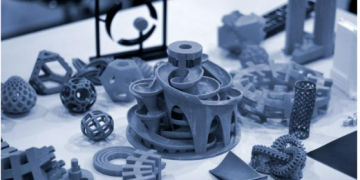If you’re like most people, you probably think of a heater cover as nothing more than a decorative accessory. In reality, however, a heater cover can be an important part of your heating system, serving to protect your heater from dust and debris.
Here’s what you need to know about heater covers and how to choose the right one for your needs.
- Heater covers are necessary because they protect the heating element inside the heater from dust and other debris. Over time, this dust can build up and cause the heater to work less efficiently. A good heater cover will keep all of the dust and debris out, allowing the heater to work at its best.
- There are a variety of different types of heater covers available on the market, so it’s important to choose the right one for your needs. The most important factor to consider is the size of the cover. You’ll want to make sure that the cover you choose is large enough to fit over the entire heater, including any protrusions.
- Another thing to keep in mind is the type of material the cover is made from. Heater covers are typically made from either plastic or metal, and each has its own advantages and disadvantages. Plastic covers are usually less expensive, but they’re also not as durable as metal covers. Metal covers are more expensive, but they’ll last longer and do a better job of protecting your heater.
- When choosing a heater cover, it’s also important to consider the climate where you live. If you live in a cold climate, you’ll need a cover that’s made from a material that can withstand the cold weather.
- In the end, the decision of which heater cover to choose is up to you. Just be sure to consider all of your options and choose the one that best meets your needs.
- Heater covers are available in a variety of sizes, so you’ll be able to find one that fits your heater perfectly. Make sure to measure your heater before purchasing a cover, and be sure to factor in any protrusions.
- When it comes to material, plastic and metal covers both have their own advantages and disadvantages. Plastic covers are typically less expensive but not as durable, while metal covers are more expensive but will last longer. Consider the climate where you live when making your decision.
- Once you’ve decided on the size and material of your heater cover, all that’s left is to choose a design that matches your personal style. Heater covers come in a wide range of colors, patterns, and styles, so you’re sure to find one that you love.
- Installing a heater cover is typically a simple process. Most covers simply need to be placed over the top of the heater and secured in place. Make sure to read the instructions that come with your cover, as some models may require slightly different installation methods.
- Now that you know more about heater covers, it’s time to start shopping for the perfect one for your home. With so many options available, you’re sure to find a cover that meets all of your needs.
FAQs:
Q: Why is heater covers necessary?
A: Heater covers are necessary because they protect the heating element inside the heater from dust and other debris. Over time, this dust can build up and cause the heater to work less efficiently. A good heater cover will keep all of the dust and debris out, allowing the heater to work at its best.
Q: What should I consider when choosing a heater cover?
A: When choosing a heater cover, you’ll need to consider the size of the cover, the type of material it’s made from, and the climate where you live. You’ll also want to choose a design that matches your personal style.
Q: How do I install a heater cover?
A: Most heater covers can be installed by placing them over the top of the heater and securing them in place. Make sure to read the instructions that come with your cover, as some models may require slightly different installation methods.
Conclusion:
There are many different types of heater covers available on the market, so it’s important to choose the right one for your needs. The most important factor to consider is the size of the cover. You’ll want to make sure that the cover you choose is large enough to fit over the entire heater, including any protrusions.





























































